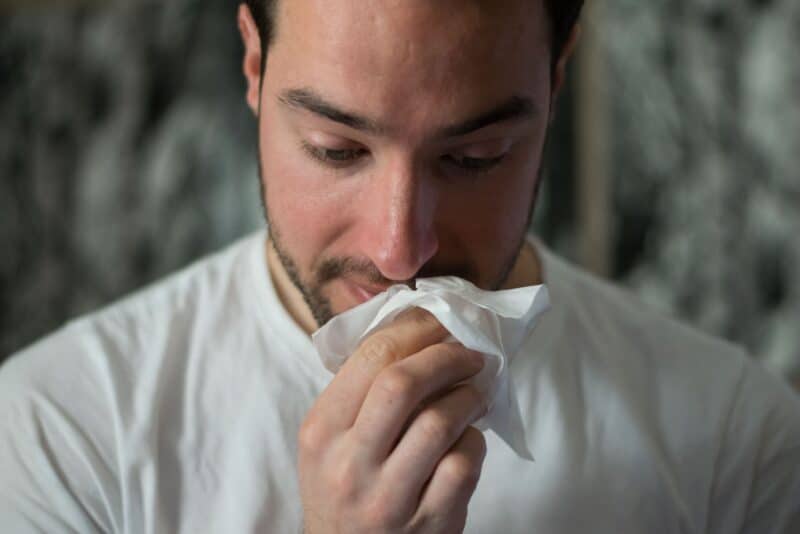
1. Pest Infestations
Even though you might only see an occasional ant, roach, or other bug coming out into the open, there could be a severe, insidious infestation hiding within the walls, attic, or basement of your home. Experts at Lake Norman Pest Control have verified that many of their clients aren’t even aware of the extent of their building’s infestation until a thorough inspection has been conducted to reveal just how bad it really is.
Rodent and bed bug infestations are particularly concerning in regard to health risks because rodents are known to carry diseases and bed bugs can cause anemia and other bothersome symptoms. Likewise, roaches can spread germs onto your food and at the very least they’re a sickening sight to see when you’re trying to enjoy a meal at the dinner table. Check this website for further information.
2. Indoor Air Pollution
Did you know that the air inside most homes is more contaminated than the air outside, even in major cities where smog and pollution is widespread? Poor ventilation, circulation, and filtering are some of the factors that contribute to poor indoor air quality. Typically, this pollution consists of dust, dander, pollen, clothing fibers, and any other small particles that are light enough to float through the air.
Typically, these particles are also small enough to be inhaled, and while most will be captured in the sinuses and upper respiratory system, their sheer presence can cause inflammation, excess mucous production, allergies, and the exacerbation of breathing-related illnesses like asthma and COPD. Even if you don’t have any of those conditions, purifying your home’s air will help you stay in good shape by reducing the burden on your body’s metabolism and eliminatory systems. One thing that can cause a significant improvement on low investment is to get a dehumidifier, you can easily get one by comparing on websites like MachineWonders.com. Humid air is one of the root causes of air contamination as it provokes dust mites which are the most common allergens.
3. Mold
Most kinds of mold won’t make most people sick, but there are some types of mold that can be particularly toxic, and some people with compromised immune systems may be susceptible to experiencing moderate to severe illness when exposed to any sort of excessive mold infestation.
Mold spores are practically ubiquitous in nature, so humans have developed good defenses against them, but infants, elderly people, and people dealing with other illnesses could encounter problems if a mold infestation gets out of control in their living area. Getting rid of mold can be a tedious and stubborn job that requires professional assistance, as improper cleanup will inevitably result in the mold returning after ideal conditions arise.
4. Dirty Water Filter
Some homes are equipped with whole-house water filters, particularly if the water supply is being pumped from a well. After a while the filter can become clogged with the particles that are being filtered out, and as new water runs through, it picks up those contaminants.
Normally a problem like this would make your tap water taste rich in minerals or it would have another off taste to it. A clogged filter can foster bacterial growth and lead to water-borne illnesses. This is also a common problem with the filters that are built into refrigerator water and ice dispensers. A simple rule of thumb is – if you notice a funny taste or particles in the water, check the filter.
5. Old Air Filter
Just as a dirty water filter could be introducing you to environmental contaminants, so could an old air filter that needs to be changed. If your home has central AC/heating and you notice a musty smell when you turn the air conditioner on, it might be time to inspect the air filter.
You’ll know a dirty air filter when you see one, and fortunately they’ll only cost you a few bucks and a few minutes of your time to replace. A clogged air filter could be causing trapped pathogens to recirculate in your home’s vents, which of course would only serve to increase indoor air pollution rather than decrease it as a filter is designed to do.
6. Dirty Oven and Stove top
Leaving some burnt cooking debris on the stovetop is a common mistake that can expose you to a number of harmful combustion byproducts and carcinogens every time you turn the stove on. Most people will turn the overhead exhaust fan on only after smelling something burning, but by that time you’ve already released the smoke into the air and have breathed some in.
Over time, cooking with burning material on your stovetop or in your oven can cause these toxic substances to build up in your home and cause unseen cellular damage that worsens or causes health problems down the road.
7. Water Leaks
Water leaks can cause mildew and mold growth, while also inviting bacterial colonies, rodents, and other potentially disease-causing problems. A leak can go unseen for quite a while until an inspection uncovers it.
If you have a mold problem that keeps coming back near a sink or faucet, that could be an indicator that there’s a leak or drip somewhere nearby. Of course, leaks can also affect the structural integrity of your home and should therefore be addressed before they advance to the point of causing water damage.
8. Lack of Natural Light
Some homes don’t let enough sunlight in through the windows, and believe it or not, this can make the inhabitants depressed or even ill if they don’t spend enough time outside of the home. If your house is always dark and dreary, it might be time to consider the addition of a few new windows and/or skylights that are strategically placed to allow maximum natural lighting in the home’s living areas.
If installing new windows is not an option for you at the moment, try to compensate for your home’s lack of sunlight by going on a 20-minute walk outside once per day. Exposure to sunlight helps you absorb a sufficient daily intake of vitamin D, which boosts the immune system and supports mental health.
9. Hazardous Building Materials
If you have an older home, it’s possible that it was built before modern safety regulations were implemented, which means it could contain asbestos and other harmful building materials. Having a specialist do a brief inspection of your home to detect and remove any hazardous materials could save you from the hassle of having to deal with a chronic disease in the long-term.
Unfortunately, some material removal services can be quite costly, but as a homeowner this is something you really don’t want to leave unabated for liability purposes, especially if you’re a landlord renting to tenants.
10. Yard Allergens
If you’re dealing with burning and itchy eyes, frequent sneezing, a runny nose, headache, or any of the other symptoms associated with allergies, the problem might not be in your home – it could be in the yard. Although allergies are typically caused by allergens that are floating throughout your region, minimizing the presence of them in your yard could help you reduce symptoms while you’re at home.
If you’re lucky, it might just be a single set of bushes or trees in your yard that are causing the majority of your allergic symptoms, in which case having them removed could provide tremendous relief. Even if the allergens are unavoidable in your neighborhood, at least you’ll know how to treat the symptoms and which plants to avoid once you’ve identified the cause.
Renovating Your Home with Health in Mind
Many household toxins come from recent or past renovations that weren’t properly done and cleaned after. If you’re planning on fixing some of the problems listed above and/or adding new components to your home, be sure to take air quality and cleanup into consideration beforehand. Line the floors with plastic sheets to prevent paint dust and other particles from settling in the carpet. It’s also very important to adequately ventilate any area that’s being worked on to ensure fine particles are circulated out of the home as they are generated.
Ventilation is especially important when you’re working with paints or sanding equipment, as these can put off noxious gases and tiny particles that could later cause allergic responses in susceptible individuals. Ultimately, your health should be held with higher priority than the appearance of your house, but that doesn’t mean you have to sacrifice the appeal and comfort of your home to stay in good shape.
Check out https://nutritiondietnews.






1 comment